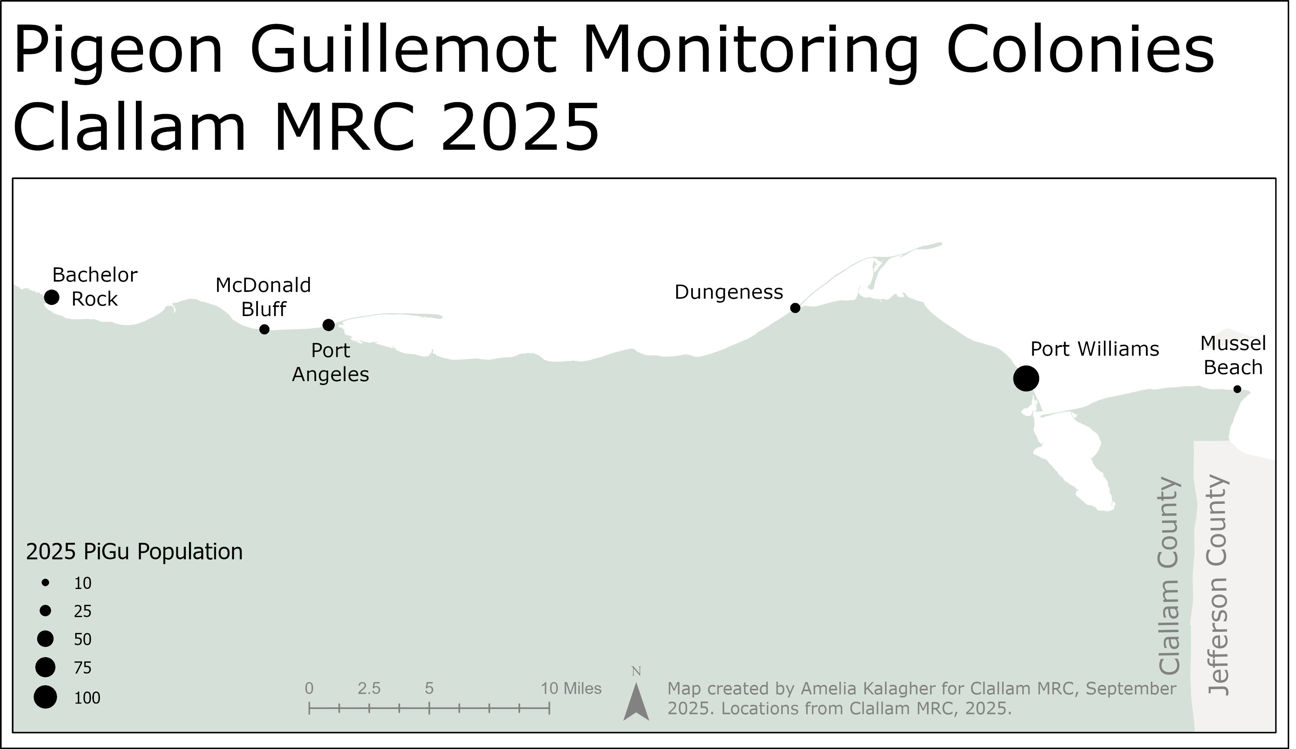
2025 Pigeon Guillemot Monitoring is complete!
Pigeon Guillemots (PIGU) are comical, engaging seabirds and an important indicator species for marine ecosystems across the Salish Sea. These seabirds are easily identified in the summer by their all black with white wing patches and bright red feet. To top that, close observation will reveal that the lining of their mouth is also an over-the-top red!
In May and June, pigeon guillemots lay eggs in burrows on nearshore bluffs. By end of June, the birds are busy providing fish for the juveniles in the burrows. The pigeon guillemot is considered an indicator species of nearshore health, since they rely on forage fish and other small marine creatures they catch by diving beneath the surface.
In 2016, the pigeon guillemot survey project was initiated in collaboration with Island MRC and Olympic Peninsula Audubon Society. Surveys take place weekly from June through September. Volunteers, dressed in neutral colors, sit quietly for one hour each week at an assigned beach location. The surveyor records the time and number of PIGU, burrow visits, type of fish carried to the burrows, and any disturbances observed from raptors, walkers and boats. The number of survey sites each year depends on the number of volunteer surveyors. The survey data are entered into a regional database, and results made available for the public.


